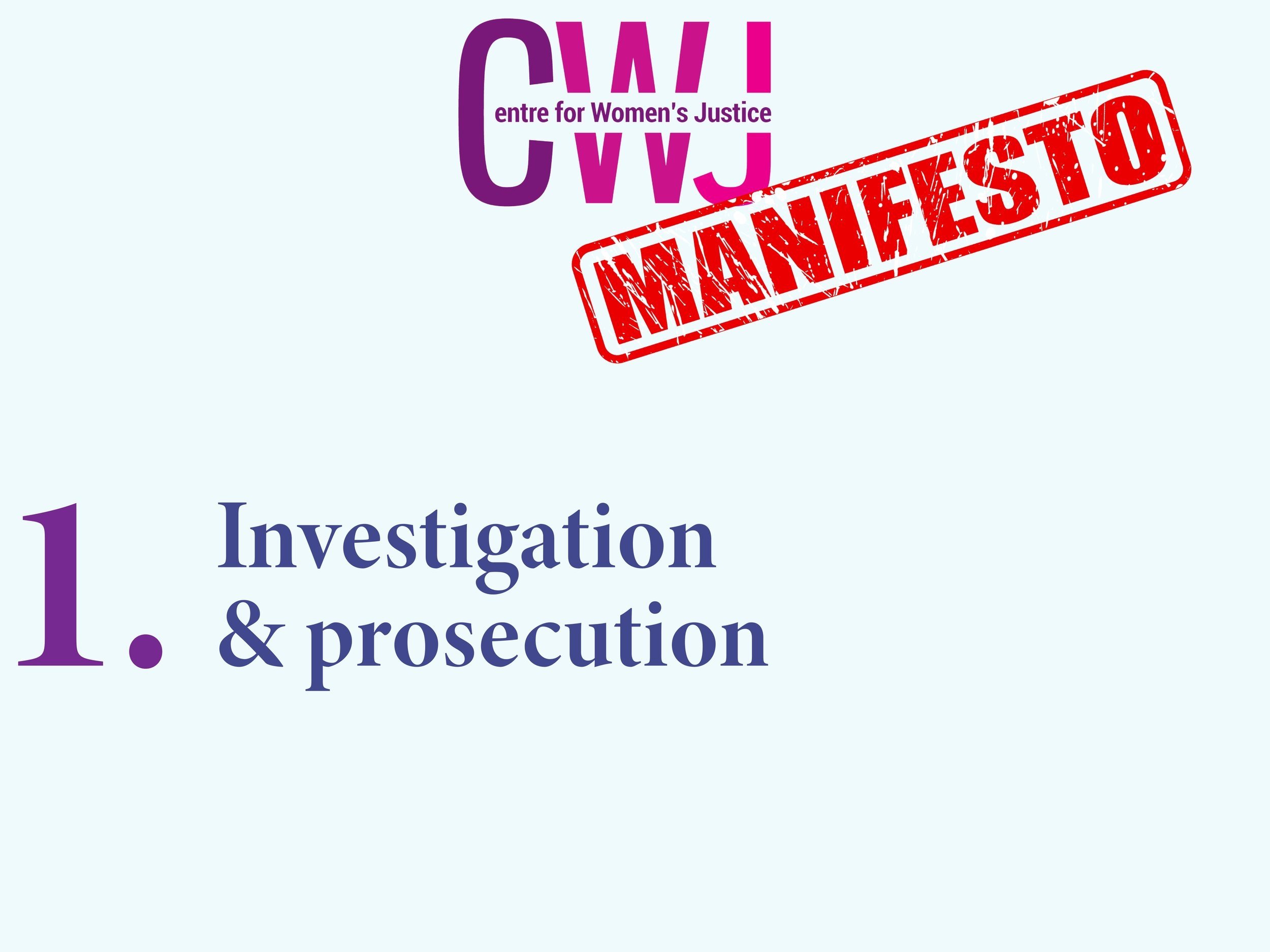Radically transform the investigation and prosecution of crimes of violence against women and girls
November 5, 2021
The Office for National Statistics published their latest annual statistics at the end of October ’21 which indicated an overall fall in violent crime with the exception of sexual offences which have increased to the “highest ever quarterly figure” with rape reports at the highest annual record. Whilst homicides have gone down, the murder of women (femicide), appears to be increasing and we know that predictably during lockdown domestic abuse increased with women physically trapped at home with their abuser .
If we want to begin to address the horrific scale of male violence against women and girls we need an effective criminal justice response which acts as a deterrent. If a perpetrator knows that he can get away again and again with, for example, spiking women’s drinks at nightclubs because the police can’t investigate effectively, and the CPS won’t prosecute then he will be emboldened to continue. If a domestic abuser knows that he can pull the wool over the eye of police attending the scene of a ‘domestic incident’ by appearing calm and rational whilst she is hysterical, then he can maintain control and make her fearful of reporting. If the police fail to investigate reports of ‘flashing’ or sexual harassment on the tube, then perpetrators of so called ‘lower-level offending’, may be emboldened to increase and escalate their violence over time.
If we want to begin to address the horrific scale of male violence against women and girls we need an effective criminal justice response which acts as a deterrent.
Many women do not report crimes of violence, particularly those of an intimate nature and there are a range of reasons for that, which include issues of shame, dishonour, fear of perpetrator, fear of authorities including the police and immigration service. Those subject to multiple disadvantage due to issues of race, disability, sexuality and other intersecting discriminations face additional barriers to reporting. For those that do report, living through the investigative process can be extremely traumatic and onerous. Investigations into crimes against women are steeped in patriarchal myths and stereotypes with the common theme of victim blaming. The way in which cases are investigated, in particular rape and other crimes where consent may be a key issue frequently seem to become an investigation into victim rather than the suspect.
Despite the many impediments posed by the investigative process, many women remain determined to hold the perpetrator to account and repeatedly women say to us that their primary motivating factor is to stop him and prevent further harm to other victims. Of those that do stay the course, a tiny proportion of cases reported will result in a prosecution let alone a just outcome. Since 2017 the number or rape cases being prosecuted has fallen to an all-time low of less than three per cent of cases reported being charged. The figures for domestic violence and other forms of violence against women are not much better.
These are just a few key processes that need to change in the investigation and prosecution process if we are to see a criminal justice system responding to the scale of violence and abuse women and girls experience
1. Focus investigations and prosecutions on the suspect not the victim and stop victim blaming (in particular limit the collection of personal data and records to material that is only relevant and necessary to comply with disclosure requirements).
2. Ensure that women reporting crimes have sufficient and appropriate support to enable them to get through the process from court to report
3. Pilot and introduce independent legal representation for rape victims at least to assist them with the disclosure process
4. Increase the volume of prosecutions in cases of violence against women taking a more robust and courageous approach, one free from the influence of myths and stereotypes and creative as to tackling these;
5. Identify, investigate and prosecute the types of ‘lower-level offending’, such as indecent exposure, sexual harassment and crimes motivated by misogyny, which if unchecked are likely to lead to an escalation of dangerousness
6. Identify and prioritise the investigation and prosecution of suspected perpetrators to those that present a risk to others – in particular target repeat and serial offenders,
7. Put in place measures to reverse the marginalisation of multiply disadvantaged victims, in particular black, Asian and minoritised women, those with mental illness and learning disabilities, prostituted, drug addicted and homeless women. Tackle and work towards the removal of the common barriers to reporting;
8. Ensure all investigation and prosecution teams are specialist, trained and accountable;
9. Treat cases of domestic abuse where there are no obvious signs of physical violence with equal seriousness, where for example there is evidence of controlling and coercive behaviour, stalking, threats to kill, online abuse
10. Immediately cease to use non-Court powers such as community resolution in sex crimes and other forms of violence against women, recognising that all such cases are serious and require a criminal law response


